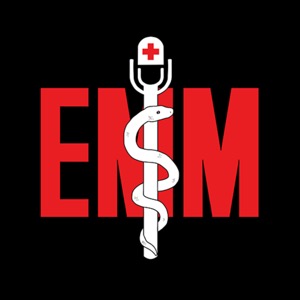Episode 947: Hypercapnia
Emergency Medical Minute - Un pódcast de Emergency Medical Minute - Lunes

Educational Pearls: Physiologic stimulation of ventilation occurs through changes in levels of: Arterial carbon dioxide (PaCO2) Arterial oxygen (PaO2) Hypercapnia is an elevated level of CO2 in the blood - this primarily drives ventilation Hypoxia is a decreased level of O2 in the body’s tissues - the backup drive for ventilation Patients at risk of hypercapnia should maintain an O2 saturation between 88-92% Normal O2 saturation is 95-100% In patients who chronically retain CO2, their main drive for ventilation becomes hypoxia An audit was performed of SpO2 observations of all patients with a target range of 88–92% at a single hospital over a four-year period This found that excessive oxygen administration was more common than insufficient oxygen and is associated with an increased risk of harm Individuals at risk of hypercapnia include but are not limited to patients with COPD, hypoventilation syndrome, or altered mental status References Homayoun Kazemi, Douglas C. Johnson, Respiration, Editor(s): V.S. Ramachandran, Encyclopedia of the Human Brain, Academic Press, 2002, Pages 209-216, ISBN 9780122272103, https://doi.org/10.1016/B0-12-227210-2/00302-2. O'Driscoll BR, Bakerly ND. Are we giving too much oxygen to patients at risk of hypercapnia? Real world data from a large teaching hospital. Respir Med. 2025 Mar;238:107965. doi: 10.1016/j.rmed.2025.107965. Epub 2025 Jan 30. PMID: 39892771. Summarized by Meg Joyce, MS1 | Edited by Meg Joyce & Jorge Chalit, OMS3 Donate: https://emergencymedicalminute.org/donate/
